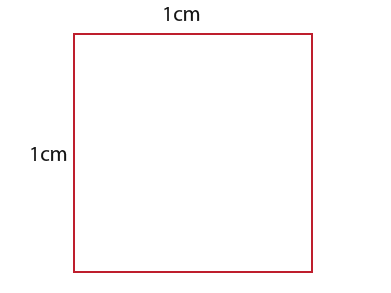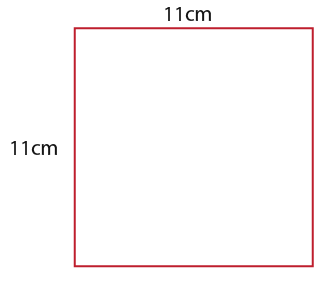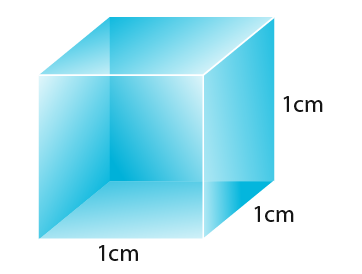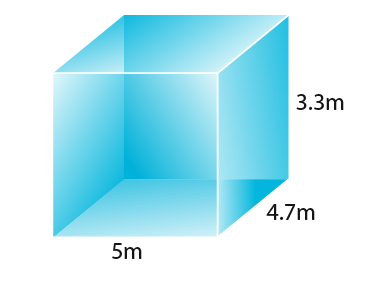Square and Cubic Units
This chapter explores square and cubic units. The objectives of this chapter are; to be able to convert between different units of area and volume, and solve area, volume and capacity problems with mixed units. Before attempting this chapter you must have prior knowledge of units of length, area, volume and the standard form.
Square Units
The shape below is a square and has sides of 1 cm.

The area for the square is;
![]()
Suppose we wanted to use mm instead of 1cm. The units have been converted from cm to mm below;

The area in mm is now;
![]()
It is therefore logical to say that 1cm² is equal to 100mm ².
![]()
With knowledge of the fact explored above you can use the fact to convert areas for example;
![]()
…and…

Let’s look at a different unit. Below is a square with sides of 11km.

The area for square is;
![]()
Suppose we use metres instead of kilometers. Below the square the square units have been converted to metres.

The above shows us that;
![]()
Suppose the above value is so big it is a good idea to use standard form.
![]()
In this example we can use the conversation to work out that;

Here is another example;

Above you may have noticed a pattern which we can use as the general when dealing with square units. In general when dealing with square units you need to square the conversation factor too for example;
![]()
…that means;
![]()
Here is another example;
![]()
…that means…
![]()
Cubic Units
The cube below has edges of 1cm.

Suppose we wanted to find the volume. The volume would be;
![]()
What if we converted the units from cm to mm. The cube units have been changed to mm as shown below;

The volume in mm would now be;
![]()
We can conclude that;
![]()
Let’s explore an example for the above conclusion.
![]()
Here is another example;

Capacity problem
Here is an example based on what is explored above.
An oil tank is in the shape of a cuboid. It measures 5m x 4.7m x 3.3m. How many litres of oil can the tank hold when full?

We know that;
![]()
First we calculate the volume of the tank in m3 so the volume is;

Next we convert the units into cm3
![]()
Every 1000cm3 makes 1 litre therefore;

So the volume is 7.55 x 103 litres we can convert the number into standard from at the moment it is not.
When writing standard forms the number at the front needs to be between 1 and 10. So we must divide 77.55 by 10.
![]()
Since we divided 77.55 by 10 we must increase the power at the end by 1 to compensate. Or simply multiply 103 by 10 since we divided. The result is;
![]()
